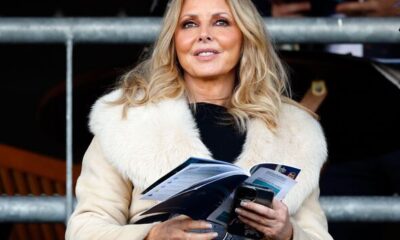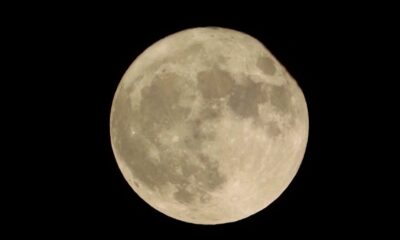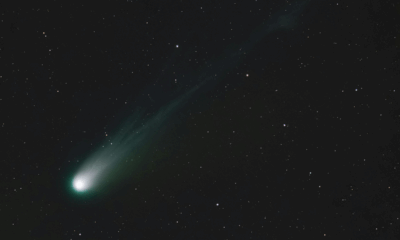Science
Discover the Waning Crescent Moon on July 22, 2025

The moon today, July 22, 2025, is in the Waning Crescent phase, which means it is nearly invisible from Earth, with only 7% of its surface visible. This phase marks day 27 of the lunar cycle, which spans approximately 29.5 days according to NASA. Observers looking to catch a glimpse of the moon tonight will find it challenging, as much of its surface is obscured.
Understanding the Lunar Phases
The lunar phases result from the varying angles of sunlight hitting the moon as it orbits our planet. During the Waning Crescent phase, the moon lies between Earth and the sun, leaving its illuminated side hidden from view. To see any details, such as the renowned Grimaldi Basin, enthusiasts will need binoculars or a telescope. The Grimaldi Basin is notable for its size, with an outer wall comparable to that of the Grand Canyon.
Tonight’s viewing conditions may not be ideal for casual observers, as the lunar surface lacks significant illumination. For those determined to explore the moon’s features, telescopes can provide a rewarding experience, allowing for a close-up view of the Grimaldi Basin’s unique characteristics.
The next full moon will occur on August 9, 2025, following the last full moon, which took place on July 10, 2025. The cycle of moon phases is a fascinating natural phenomenon, capturing the interest of both casual stargazers and serious astronomers alike.
The Eight Phases of the Moon
The lunar cycle comprises eight distinct phases, each representing a different stage in the moon’s visibility. These phases are:
- New Moon: The moon is positioned between Earth and the sun, resulting in a dark sky.
- Waxing Crescent: A small sliver of light begins to appear on the right side (in the Northern Hemisphere).
- First Quarter: Half of the moon is illuminated, resembling a half-moon.
- Waxing Gibbous: More than half of the moon is lit but not quite full.
- Full Moon: The entire face of the moon is illuminated, fully visible to observers.
- Waning Gibbous: The moon starts to lose light on the right side.
- Last Quarter: Again, half of the moon is visible, but now the left side is lit.
- Waning Crescent: A thin sliver of light remains on the left before it goes dark once more.
This cyclical pattern not only affects how we view the moon but has also played a significant role in various cultural and scientific contexts throughout history. Understanding these phases can enhance the experience of gazing at the night sky.
-

 Entertainment3 months ago
Entertainment3 months agoAnn Ming Reflects on ITV’s ‘I Fought the Law’ Drama
-

 Entertainment4 months ago
Entertainment4 months agoKate Garraway Sells £2 Million Home Amid Financial Struggles
-

 Health3 months ago
Health3 months agoKatie Price Faces New Health Concerns After Cancer Symptoms Resurface
-

 Entertainment3 months ago
Entertainment3 months agoCoronation Street’s Carl Webster Faces Trouble with New Affairs
-

 Entertainment3 months ago
Entertainment3 months agoWhere is Tinder Swindler Simon Leviev? Latest Updates Revealed
-

 Entertainment4 months ago
Entertainment4 months agoMarkiplier Addresses AI Controversy During Livestream Response
-

 Science1 month ago
Science1 month agoBrian Cox Addresses Claims of Alien Probe in 3I/ATLAS Discovery
-

 World2 weeks ago
World2 weeks agoBailey Announces Heartbreaking Split from Rebecca After Reunion
-

 Health4 months ago
Health4 months agoCarol Vorderman Reflects on Health Scare and Family Support
-

 Entertainment4 months ago
Entertainment4 months agoKim Cattrall Posts Cryptic Message After HBO’s Sequel Cancellation
-

 Entertainment3 months ago
Entertainment3 months agoOlivia Attwood Opens Up About Fallout with Former Best Friend
-

 Entertainment2 weeks ago
Entertainment2 weeks agoCoronation Street Fans React as Todd Faces Heartbreaking Choice





















